Piano tones and the keyboard
This article explains how piano keys are arranged on a keyboard and the reason for it. You will learn the difference between white and black notes and where to find a certain note.
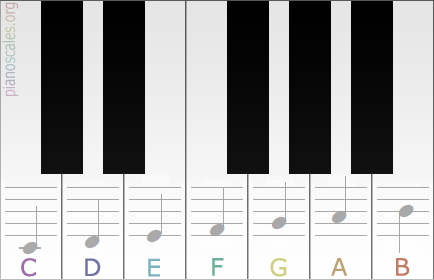
The
graphic representations (above one octave, below two octaves) shows all the natural notes on the piano (C, D, E, F, G, A and B) together with how they are arranged in a musical notation system (treble clef). The seven white keys correspond to with the same notes all over the keyboard, what differs is the pitch.

Open 2 octaves image in full size
Tones and pitches
A piano can contain different numbers of keys since there are only twelve different tones, which are repeated at different pitches. A pitch is the frequency of the sound measured in hertz, but it is easier to think of low, mid and high ranges. On the left side of the keyboard is the low ranges (bass) and on the right side the high ranges (treble).
![]()
On the picture above, you can see the placements of the C note and how it is repeated on different octaves (the interval between two notes of the same kind). So, when playing a C on the piano, you have seven alternatives – in most cases you will choose between the mid-range alternatives.
Sometimes the placement of the notes are referred to as C1, C2, C3, C4, C5, C6 and C7. C4 is consequently the C note on the fourth octave.
The white keys
Of course, there are more notes than C. On the picture below you can see all the notes that belong to the white keys on the piano.
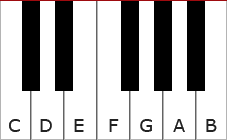
These notes maintain the same relationship across the keyboard, and therefore you can always find a D to the right of a C. Notice that C and F notes are easier to spot because they are placed directly before groups of two and three black keys, respectively.
The black keys
The black keys repeat in patterns of two and three note groups over the keyboard.
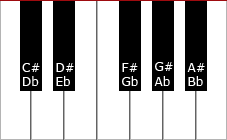
The black keys are a little more complicated than the white. As you can see from the picture, every key has two names. The note names C# and Db are used for the same key depending on the situation (the musical context). C# is a raised C and Db is a lowered D. The symbols # and b should be spelled sharp and flat (for further explanation, see Theory).
Different keyboard sizes
Both grand and upright pianos have 88 keys, which include seven octaves plus a few “orphans”. Many digital pianos also have full-size keyboards, while others come in smaller variations. Less expensive digital keyboards are equipped with lesser keys. A keyboard with 44 or 49 keys is in many cases sufficient to play songs and compositions on, but in some cases, it will lack keys (keyboards with 32 keys are also common, but are not recommended for anybody serious about learning to play the piano). See keyboard dimensions below.
Keyboard and keys dimension
A full-size keyboard has 88 keys, including 52 white and 36 black keys.

The standard length of a full-size keyboard is circa 123 cm (48 inches). For the keys the dimensions are circa 2.4 cm (0.9 inch) width for white keys and 1.4 cm (0.6 inch) width for black keys. The dimensions may vary some depending on models and manufactures.
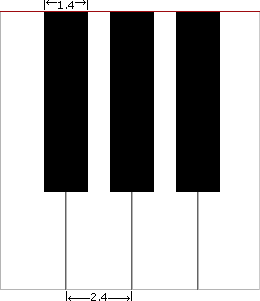
The height is normally circa 15 cm (5.9 inches) for white keys and circa 9 cm (3.5 inches) for black keys.
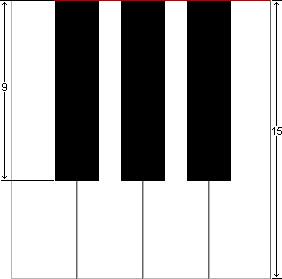
Continue and learn more about musical notes and their names